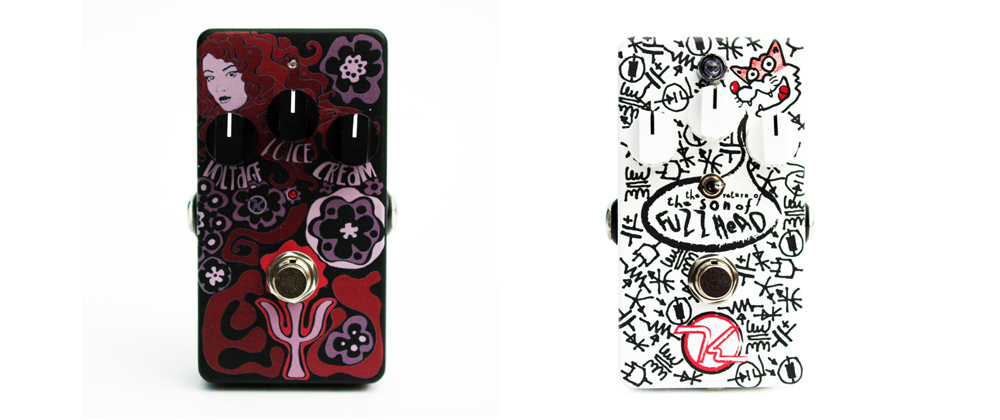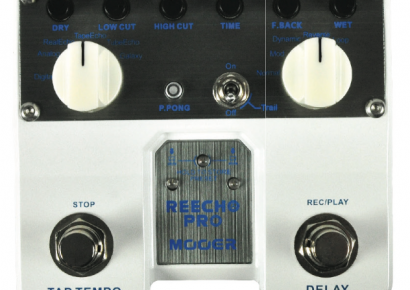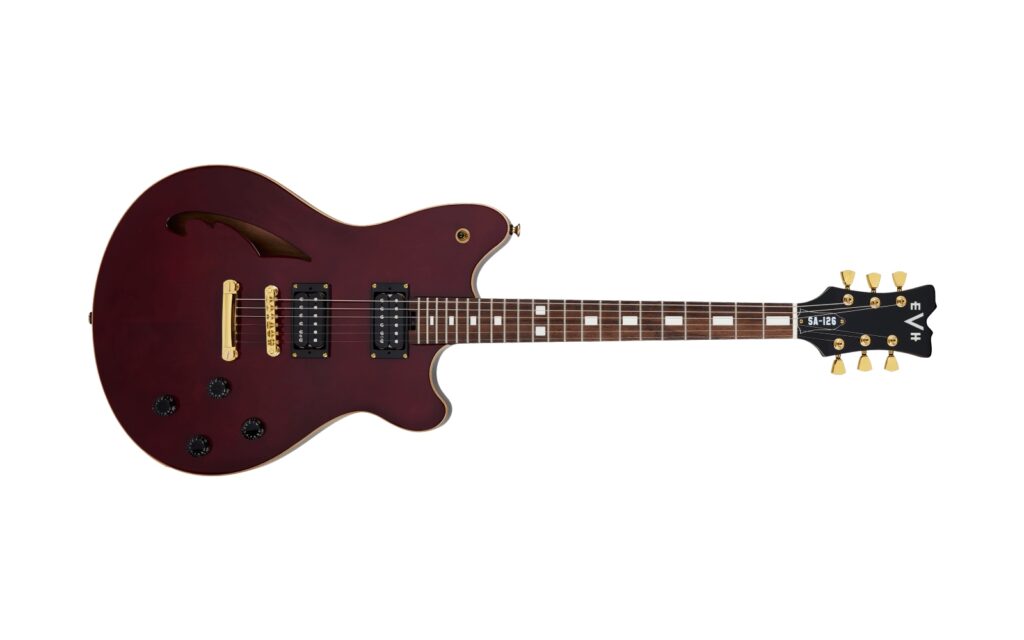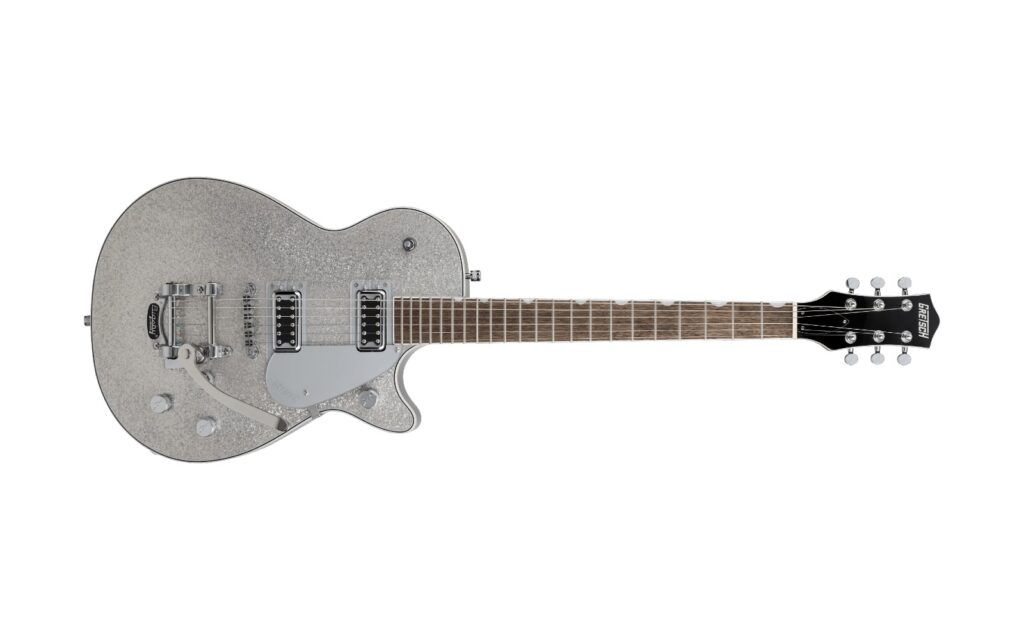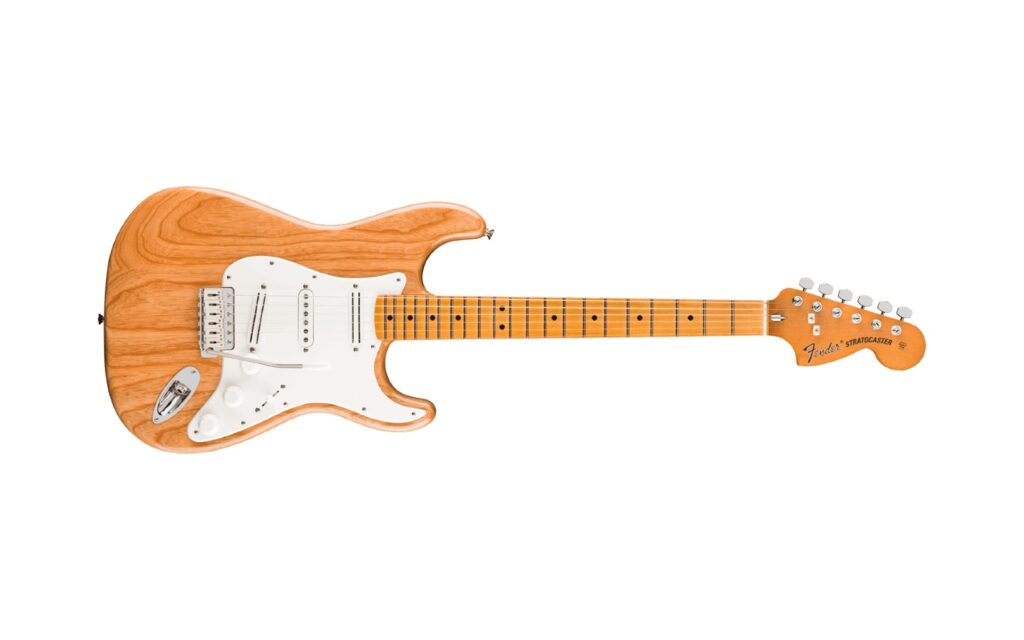PSI FUZZ
The goal of the Psi Fuzz was to create a hybrid pedal combining a modi_ ed op amp fuzz and a Germanium output transistor. The clipping LED is on the outside so you can see it lighting up when it’s doing its job, which is kinda fun! The controls are Voltage (volume), Voice (kind of a tone control) and Cream (kind of a gain control), and the pedal is available in two visual styles: one hand-drawn by Erin Lofties in the spirit of the 60s reinterpretation of Art Nouveau, and a Gold Brick Greek God model. This pedal was a big hit at Winter NAMM this year. Essentially it taps into the same spirit as a Big Muff Pi type fuzz – the early kind that used op amps instead of transistors – but with that Germanium fatness as well. The Psi Fuzz is a master of thick, creamy solo tones and hairy, gritty power chords. It doesn’t appreciate you being clever and throwing in more complex voicings but it’s very happy when you slam it with freak-out soloing. What’s particularly interesting apart from that gorgeous art work is that the Voice and Cream knobs feel interactive, to the point where if you nudge one just a little then it seems to affect the operation of the other. You can use it for a treble-heavy rasp or a round, smooth hum.
SON OF FUZZ HEAD
Keeley describes Son of Fuzz Head as “my best offering,” so you know it’s gonna be something super-special from the get-go. It retains the Differential Pair transistor setup at the heart of the design that is unique to the original Fuzz Head pedal but with the addition of a JFET tube-amp simulator on the front end followed by a germanium transistor gain stage. Keeley also improved the Tone control and moved it to the outside of the pedal, a change that fans have been asking for for over a decade, and there’s a switch which lets you remove diode clipping completely for an overdrive – as opposed to fuzz – tone. The controls are Fuzz/Gain, Tone and Output Level alongside the Fuzz/ Gain toggle switch. Oh and the artwork is by Cal Schenkel, who did plenty of art for Frank Zappa! This is an addictive little fuzz. It can get rather dirty and scrappy in fuzz mode, with great sustain and hair, and more of an upper-midrange bite than the Psi Fuzz. The Overdrive mode is noticeably louder, fuller, thicker and boomier, providing a really dramatic contrast. In fact, it’s kind of a shame that the Fuzz/ Overdrive control isn’t footswitchable because it would be a great asset on stage.
